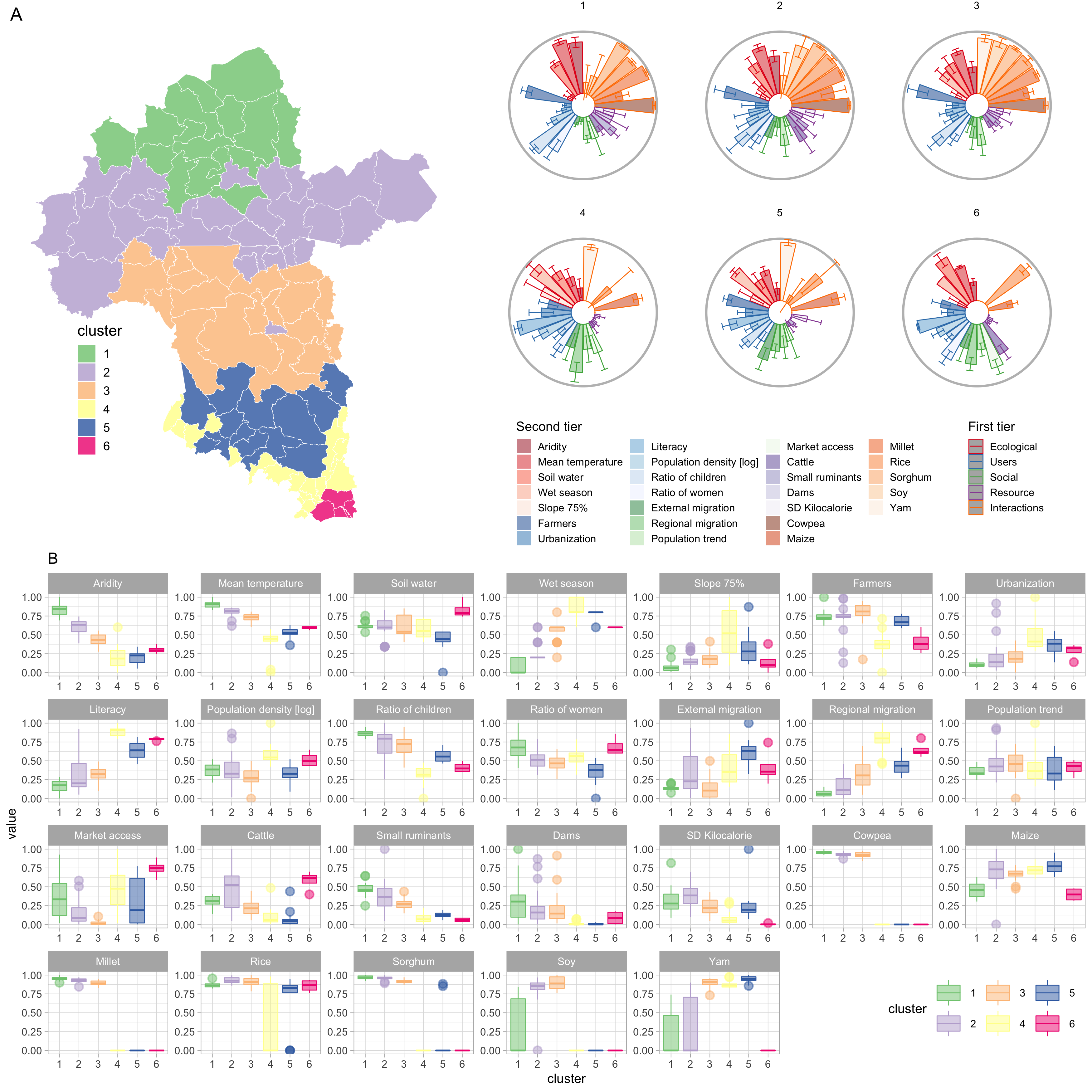 Picture by Katja Malmborg
Picture by Katja MalmborgAbstract
Achieving sustainable development goals requires targeting and monitoring sustainable solutions tailored to different social and ecological contexts. A social-ecological systems (SES) framework was developed to help diagnose problems, identify complex interactions, and solutions tailored to each SES. Here we develop a data driven method for upscaling the SES framework and apply it to a context where data is scarce, but also where solutions towards sustainable development are needed. The purpose of upscaling the framework is to create a tool that facilitates decision-making in data-scarce contexts. We mapped SES by applying the framework to poverty alleviation and food security issues in the Volta River basin in Ghana and Burkina Faso. We found archetypical configurations of SES in space, and discuss where agricultural innovations such as water reservoirs might have a stronger impact at increasing food availability and therefore alleviating poverty and hunger. We conclude by outlining how the method can be used in other SES comparative studies.
Summary
Countries today face the challenge of achieving sustainable development goals, but pathways towards their achievement are context dependent. How to differentiate what works and where is a key challenge in sustainability science. Our paper addresses this challenge by using Ostrom’s social-ecological system’s (SES) framework. The framework was designed to better understand how communities achieve sustainable management of common pool resources, it has been typically applied to local case studies, but their findings are hard to scale up to policy relevant arenas. In our paper we upscale the framework to the Volta basin -a binational watershed between Ghana and Burkina Faso- and use it to better understand where an agricultural intervention such as the construction of water reservoirs can improve food security.
The purpose of the study is developing a data-driven approach to upscale Ostrom’s framework and identify typologies of social-ecological systems. We used state-of-the-art statistical techniques to guide algorithm choices or number of clusters to fit, improving the reproducibility and rigour when compared with previous classifications of social-ecological systems. Our technique can be used in other countries, especially data scarce settings, to track progress towards sustainable development goals at a finer scale than currently measured. We hope the method applied in other settings will help better understand what policies work and where. As a proof-of-concept, we used our classification of social-ecological systems to better understand where future investments in water reservoirs can potentially increase food security in Ghana and Burkina Faso, a region in one of the most arid places of the planet and with severe challenges to achieve the zero hunger SDG.

SES typologies of the Volta basin based on the Ostrom framework and publicly available data. The SES framework was operationalized by analyzing datasets that are used as proxies for Ostrom’s suggested variables at spatial units that correspond to the second administrative level in the Volta river basin, between Ghana and Burkina Faso (A). (B) shows the distribution of each variable and allows for cluster comparison within variable.